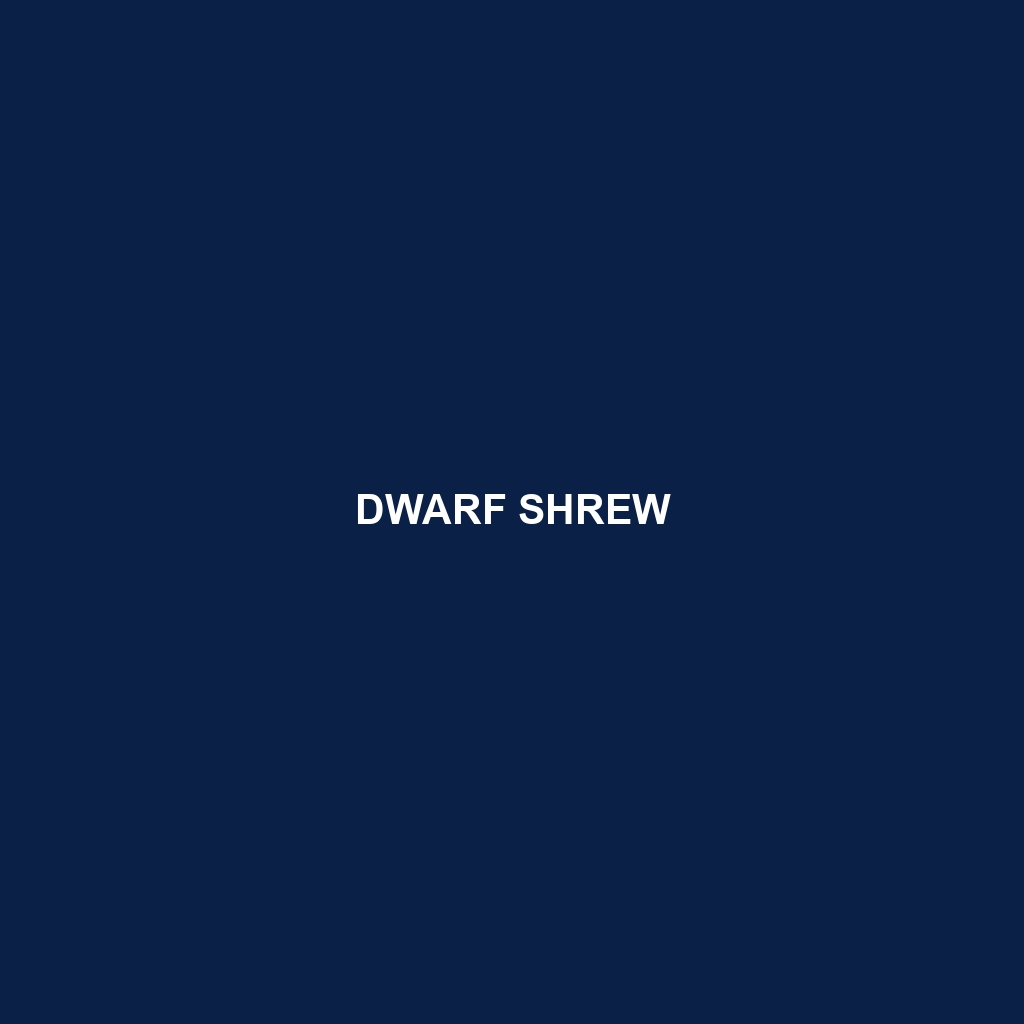Dwarf Shrew (Scientific Name: Sorex minutus)
Habitat
The Dwarf Shrew is predominantly found in Europe, particularly in wooded regions and meadows. This species thrives in a variety of environments, including moist grasslands and deciduous forests. Dwarf Shrews are often associated with areas that provide abundant leaf litter and underbrush for hiding and foraging.
Physical Characteristics
The Dwarf Shrew is a small mammal measuring approximately 6 to 9 centimeters in length, excluding the tail, which can add another 3 to 5 centimeters. Its fur is typically soft and dense, exhibiting a mixture of brown and gray shades which helps in blending with its surroundings. Distinctive features include a pointed snout and small eyes, contributing to its characteristic shrew appearance.
Behavior
Dwarf Shrews are known for their active and inquisitive nature. They exhibit solitary behavior, with individuals often foraging alone during the day and night. Their remarkable agility allows them to swiftly navigate through dense vegetation, and they communicate with each other through a series of high-frequency vocalizations. Furthermore, they are known to engage in territorial displays to establish dominance over their habitat.
Diet
This species primarily feeds on a diet consisting of insects, worms, and small invertebrates. Dwarf Shrews are also known to consume berries and other plant materials when invertebrate prey is scarce. Their high metabolism demands frequent feeding, leading them to hunt throughout the day and night.
Reproduction
The breeding season for Dwarf Shrews typically occurs from April to September. Females can give birth to 2 to 7 offspring after a gestation period of approximately three weeks. Notably, the young are born blind and remain with the mother until they are capable of independent foraging.
Conservation Status
The Dwarf Shrew is currently classified as Least Concern by the IUCN. Nevertheless, habitat destruction and climate change pose potential threats to their populations, making continued monitoring essential.
Interesting Facts
Did you know the Dwarf Shrew has a rapid metabolism that requires it to consume over its body weight in food each day? Additionally, it is one of the smallest mammals in Europe, making it a fascinating subject for wildlife enthusiasts and researchers alike.
Role in Ecosystem
The Dwarf Shrew plays a vital role in its ecosystem, serving as both a predator and prey. By consuming insects, it helps control insect populations, contributing to ecological balance. Conversely, it is an essential food source for larger mammals and birds, thus linking multiple trophic levels.

